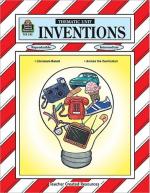|
This section contains 1,567 words (approx. 6 pages at 300 words per page) |

|
Background
The age of humanism that followed the Medieval era built upon a revolution in science that celebrated human curiosity and its use of rational inquiry. This embrace of human discovery also affected technology with a rational approach to the material world and a growing interest in transforming that world through individual action. With the advent of mechanical printing and the resulting development of a literate technology, technological change accelerated and technological diffusion widened. As a result, the Western world associated science and technology with progress, incorporating them into the larger framework of a humanist perspective so characteristic of the Renaissance and Age of Enlightenment.
Mechanized Printing
More than any other development of this era, mechanized printing transformed the nature of technology. Johannes Gutenberg (c. 1398-1468) used his background as a metallurgist to devise a means of printing with interchangeable...
|
This section contains 1,567 words (approx. 6 pages at 300 words per page) |

|


